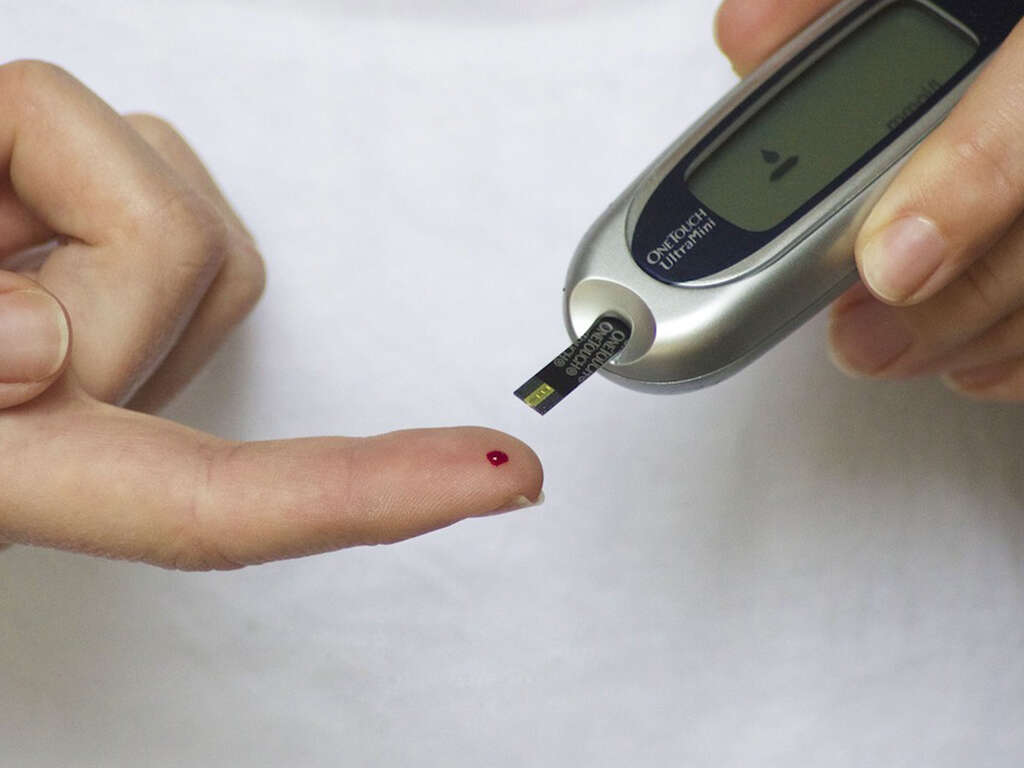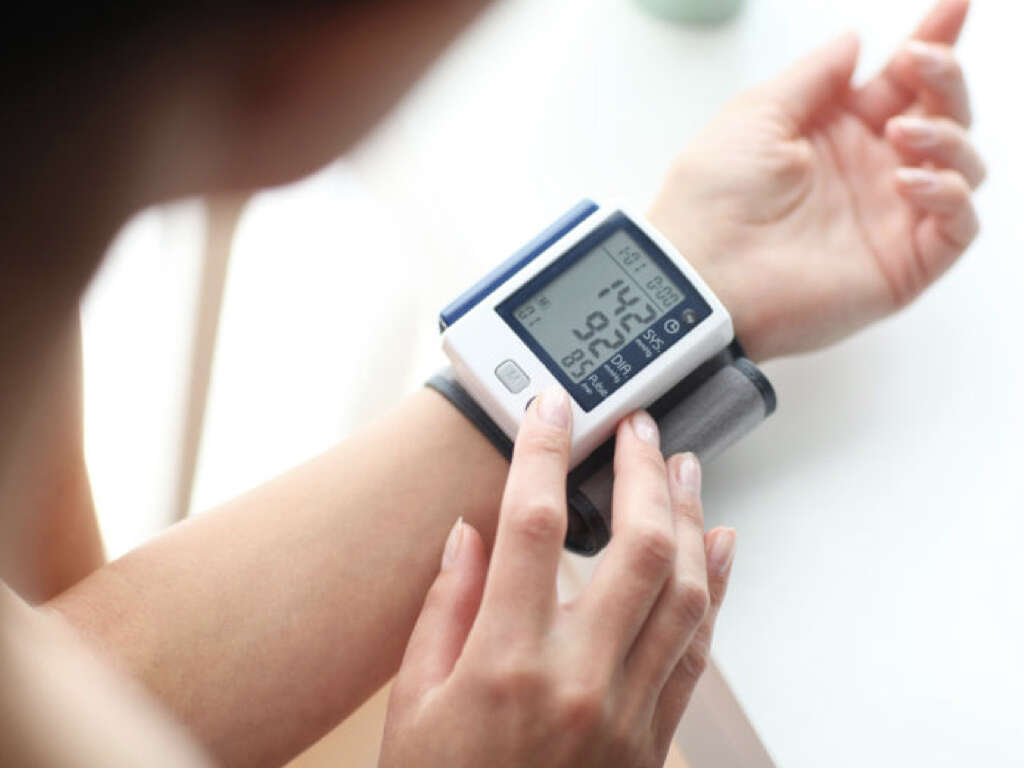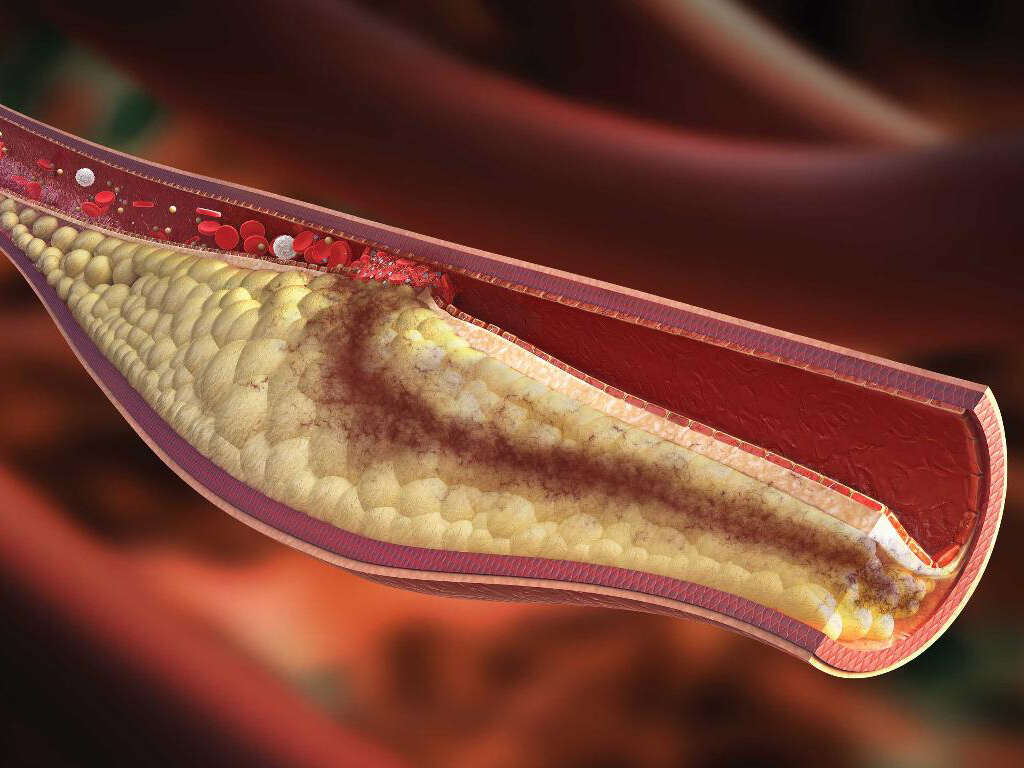10 Hyperlipidemia Symptoms
Hyperlipidemia is commonly known as high cholesterol. It is characterized by an abnormal elevation of any or all lipids (fat) in the blood. There are two types of hyperlipidemia: primary and secondary hyperlipidemia. Primary hyperlipidemia is usually caused by genetic factors, while secondary hyperlipidemia is caused due to another underlying medical condition, such as diabetes.
This condition is treatable, even though you might need to check your cholesterol levels for the rest of your life. Leading a healthy life with a balanced diet low in fat and regular physical activity is very important when it comes to controlling cholesterol levels in the blood. Your goal should be reducing the harmful cholesterol levels either with medications or lifestyle changes, as this way you will lower the risk of atherosclerosis, heart attack, heart disease, stroke, and many other health problems.
How to recognize hyperlipidemia? Below are 10 hyperlipidemia symptoms that you should be aware of.
Symptom #1: No Symptoms
As abovementioned, hyperlipidemia is a condition characterized by high levels of lipids (fats) in the blood due to various reasons, mostly because of a poor diet. However, it does not necessarily mean that one will start to experience symptoms immediately.
In most cases, there are no symptoms at all in the first stages when the levels of lipids in the blood are not extremely high but above their normal values. The fat starts to accumulate and cause damage in the entire body, especially in the cardiovascular system, even though there might be no noticeable signs and symptoms. Even though it’s something that you can’t feel, you will notice its effects someday.
Symptom #2: Xanthomas
Xanthomas are one of the symptoms of hyperlipidemia. Xanthomas are fatty growths that develop under the skin. They can appear on any part of the body, even though they typically develop on the joints, especially knee and elbow joints. They are usually not painful and can vary in size.
Xanthomas look like flat bumps under the skin, yellow or orange in color. Often, they develop in clusters in the same area. However, xanthomas can also develop as individual growths on different parts of the human body. In cases when a xanthoma is noticed, there will be higher lipid levels in the blood, which should be monitored and treated to lower the risk of various health problems including cardiovascular diseases such as angina pectoris, high blood pressure, heart attack, stroke, and so on.
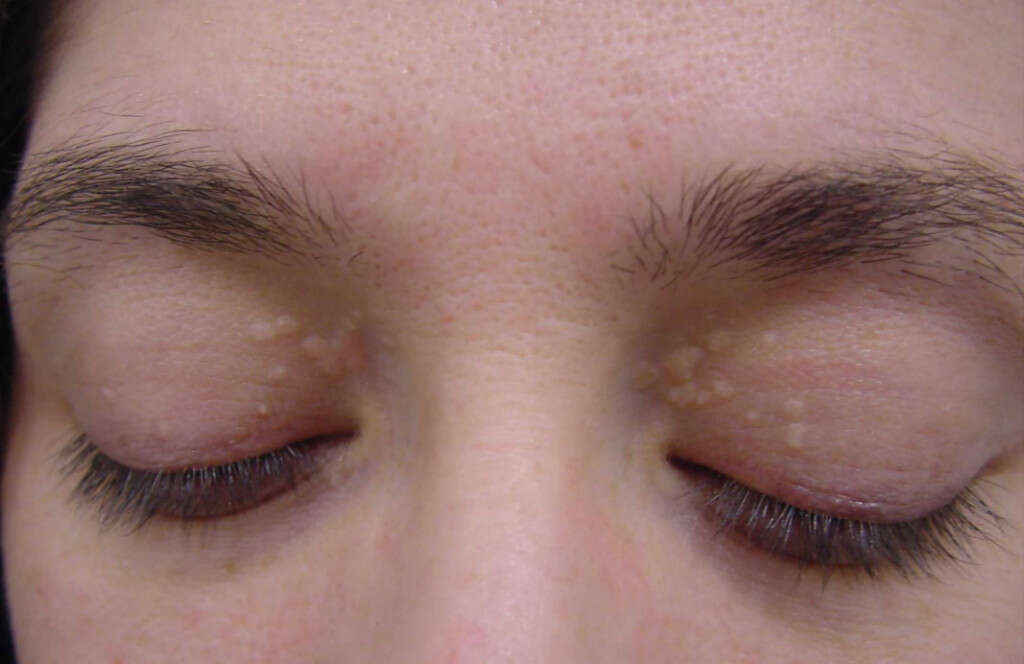
Symptom #3: High Blood Pressure
Hyperlipidemia develops in cases when the levels of fats (lipids) in the blood are higher than they should. Having high levels of fats in the blood will have a negative effect on the human body, especially on the arteries, which can narrow or become blocked due to fat depositions, otherwise known as atherosclerotic plaques. When atherosclerosis develops, blood pressure will start to rise, besides other possible health problems that develop. High blood pressure is any blood pressure above 140/90 mmHg.
High blood pressure symptoms include a severe headache, chest pain, difficulty breathing, irregular heartbeat, fatigue, confusion, and so on. Measuring the blood pressure regularly is necessary, as well as taking high blood pressure medications together with hyperlipidemia medications. Changing your lifestyle is also important to prevent serious health problems.
Symptom #4: Swelling of Organs
Hyperlipidemia is a condition characterized by higher fat levels in the blood. These fats do not only cause harm to the cardiovascular system as they get deposited to the artery walls leading to the formation of atherosclerotic plaques, but they also start depositing under the skin. This leads to the formation of xanthomas, as well as deposits starting in the inner organs of the body.
The organs that are commonly affected by high levels of fat in the organism are the liver, the spleen, and especially the pancreas. Of course, when inner organs are affected and they start swelling then their normal functioning will be affected leading to the development of various other signs and symptoms.
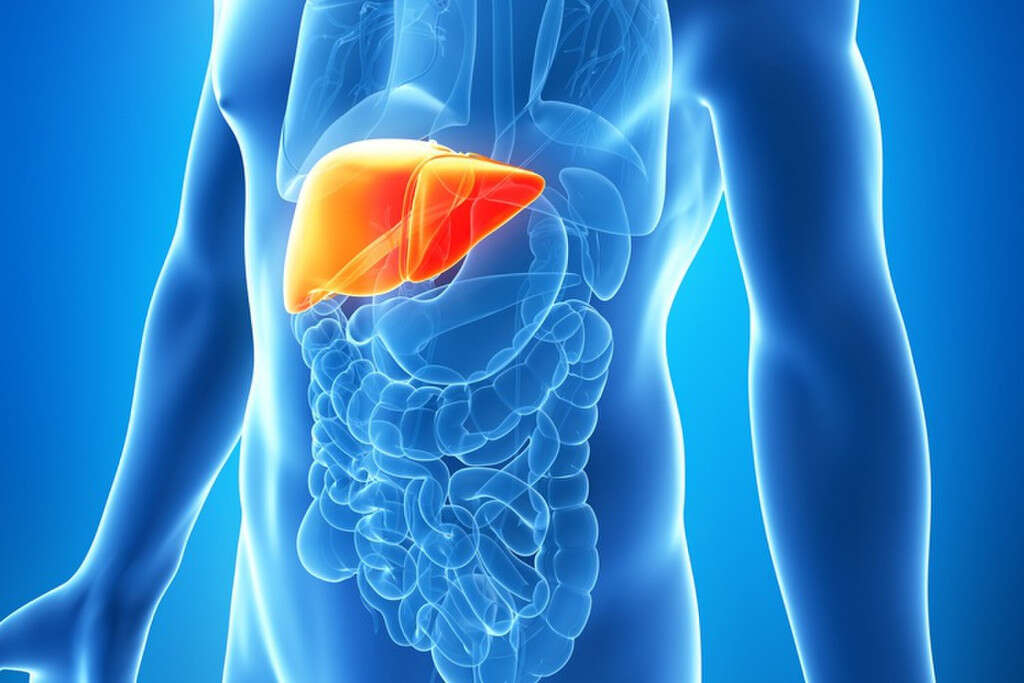
Symptom #5: Gallstones
High cholesterol levels in the body will lead to various signs and symptoms depending on where these fatty deposits start to accumulate. Gallstones are another symptom of hyperlipidemia as they are hard particles that are formed in the gallbladder due to high cholesterol levels in the blood. These stones can range in size.
Abdominal pain, nausea, and vomiting, as well as, diarrhea are symptoms of gallstones which one should be aware of. However, not all gallstones are painful and often they are discovered accidentally during a routine check-up.
Symptom #6: Symptoms of Peripheral Artery Disease
Symptoms of peripheral artery disease include leg discomfort, leg pain, leg cramping while walking which tends to get relieved at rest, pain in the ball of the foot, and pain in the toes as the condition progresses. In severe cases of peripheral artery disease, when the arteries are almost totally blocked due to fat depositions because of high cholesterol, otherwise commonly known as atherosclerotic plaques, painful foot ulcers, toe discoloration, infections, and even gangrene of the toe or foot are possible.
If you notice any of the symptoms above, especially in the early stages of peripheral artery disease, it is necessary to check your fat levels in the blood. If hyperlipidemia is diagnosed, you should change your lifestyle immediately and get the necessary treatment before it becomes too late and you experience severe health problems.

Symptom #7: Angina Pectoris
Angina pectoris is characterized by chest pain and discomfort due to coronary heart disease. Its main symptom is chest pain, which occurs when the heart muscle can’t get enough oxygen for its normal functioning. When angina pectoris is diagnosed together with hyperlipidemia, it’s time to change your life to prevent any further complications, including a heart attack in the future or even sudden death.
A healthy diet, a lot of physical activity, medications for high blood pressure, medications for hyperlipidemia, and so on, will help you control your cholesterol levels and prevent health problems in the future.
Symptom #8: Symptoms of a Heart Attack
High cholesterol levels, as already mentioned, have a negative effect on the entire body, including the cardiovascular system. In many cases, hyperlipidemia is only diagnosed in cases of a heart attack.
Symptoms of a heart attack that you should be aware of include sudden chest pain and a sensation of pressure or squeezing in the chest, pain or pressure which radiates to the neck, jaw, shoulders, upper back, arms, shortness of breath, and sweating. A heart attack is a serious and life-threatening condition which requires immediate medical help. If you experience the abovementioned symptoms, sit down and call for help.
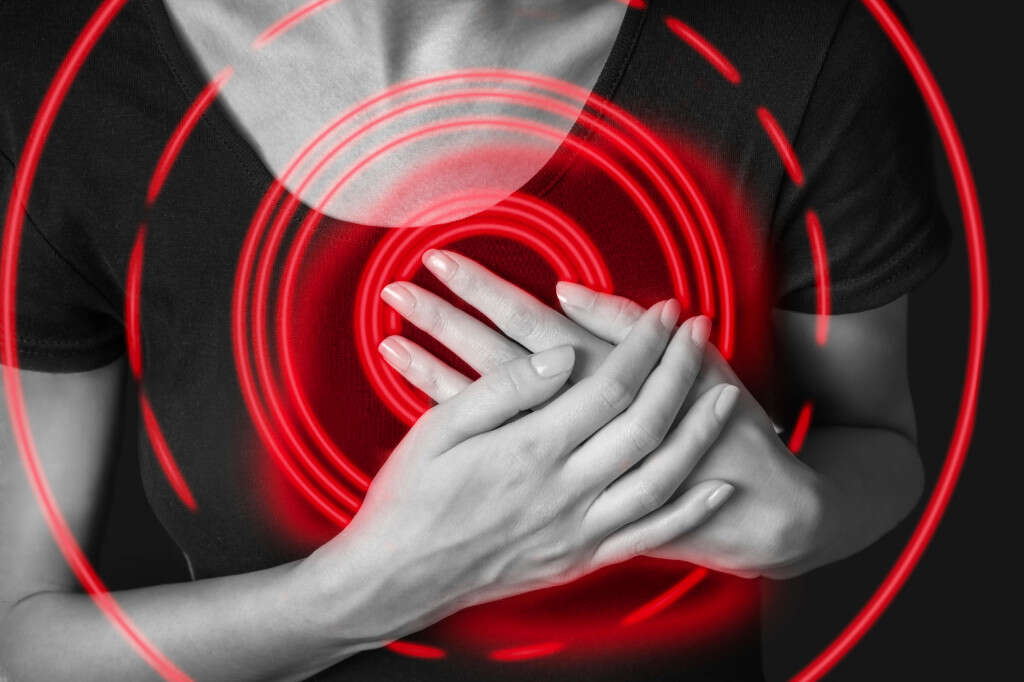
Symptom #9: Symptoms of a Transient Ischemic Attack (TIA)
A transient ischemic attack (TIA) is commonly known as a mini-stroke, which is a warning of a stroke. Estimates show that 1 to 3 people who have had a TIA will have a stroke at some point in their life. The signs and symptoms are similar to those of a stroke but they only last for a couple of minutes. A TIA does not cause any permanent damage but it is an opportunity to take steps and prevent a stroke in the future. Symptoms of a TIA include a sudden and severe headache, weakness and numbness on one side of the body, loss of movement of the arm or leg, partial vision loss, and an inability to speak clearly.
Those who have high cholesterol levels are more likely to have a TIA due to damaged arteries of the neck and head because of fat deposition on the artery walls and the formation of atherosclerotic plaques.
Symptom #10: Symptoms of a Stroke
Anyone can have a stroke but those with hyperlipidemia have a higher risk. Higher fat levels in the blood will have a negative effect on the entire body, including to the arteries of the brain, which can get clogged leading to a stroke.
Stroke symptoms that one should be aware of are sudden numbness or weakness in the face, arms, or legs, sudden confusion and difficulty speaking, difficulty understanding speech, vision problems in one or both eyes, sudden trouble walking, dizziness, loss of coordination, and loss of balance. As hyperlipidemia is often asymptomatic, a stroke could be the event that diagnoses it.



